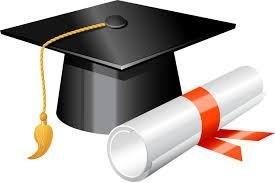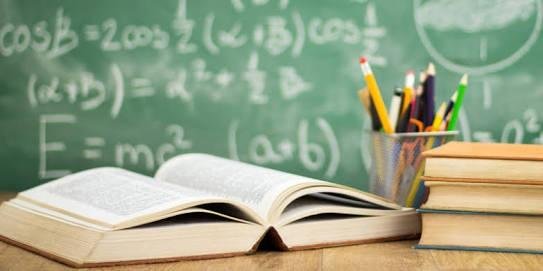
Indian K12 Education System: Vision 2030
K12 Education In India Has Become One Of The Largest Entities In The World, With 260 Million Student Enrolments.
Public Sector and Education
When you work in the public sector or in education, vast numbers of people rely on you day after day. So it’s good to know you can rely on us to protect your employees, your stakeholders and your students through specialist Public Sector and Education Insurance programmes, leaving you free to deliver the vital services we all depend on.
Students at graduation
Our team understands the unique challenges you face and by drawing on our expertise and access to specialist markets, we can design and deliver programmes that addresses risk and complexity.
We work with local and national government, government departments and agencies, blue light services, higher and further education, healthcare providers and registered social landlords and we continually drive innovation so that you are equipped with the products, services and tools you need.
define goal and purpose that one has to achieve. Education and food are both important to survive in this competitive world. Education is critical to improve our society and for sustainable development of country. Quality schooling system has become a need in Indian education sector. Indian government and private investors has played a key role to be one of the best school education systems in whole world.
Even though India has achieved a certain level in education, students still lags behind when it comes to showcase their skill in real life scenarios. Educationalist must find solutions to provide quality education and prepare students to face any challenges that life throws at them. Schools are there to guide students and provide them a way to participate and work in society.
As per the latest EY-FICCI report on Vision for School Education 3.0 these are the current statistics of Indian School Education.
Current Statistics:
Annual Indian Government spending is Rs 323 thousand cr.
Annual Government spend per enrolled student is Rs 12.5k.
Present no. of schools in India are around 1.5 million.
Enrolments raised up to 260 million students.
75% of schools are of government and 25% are of private.
57% students get education through Government schools and rest 43% from Private.
Share of private sector continues to increase from 16% in 2005 to 25% in 2016.
Way to reach High Road
Some of the measures that can be taken to achieve the high road for K12 Indian education system as per the EY-FICCI report are:-
Ensuring adequate training and development of teachers for quality education.
Adoption of outcome focused teaching practices for student’s better future.
Increase in supply of education by promoting and attracting investments.
Increase access and equity in education to provide equal opportunities to all.
Reduction in dropout rate and creating interest can be done by adopting learning based approaches for study.
More focus on analytical learning and skill development learning.
Change in curriculum of schools is required and focus more on innovative and learner centric approach.
All these factors are necessary to be adopted by the K12 schools to achieve the vision 2030 and for better India.
Better Education Can Decrease Wealth Inequality
Inequality in global education is at the forefront of global wealth inequality
Today the world is doing a lackluster job of finding sustainable solutions to global inequality. This crisis is evident in cities like Lima, Peru where a “wall of shame” separates the wealthy neighborhoods from the poor shantytowns. It is disconcerting that the United Nations estimates today that 1.2 billion people live on less than $1 a day, while Forbes reports that the world’s 1,810 billionaires hold a net worth of $6.48 trillion.
The world’s failure to effectively fight poverty can be significantly attributed to corruption, as most heads of state are more concerned with pleasing their wealthy financiers and retaining power. In addition, global thought leaders use inequality as a quest for global fame and padding their bank accounts. Sadly, the majority of influential global leaders lack sincere passion for the poor and compete for awards or reelection, instead of working together to find legitimate solutions, such as enhancing global education.
Solutions, Not Problems
Today many economists highlight growing middle classes in China and India as hope for the global poor and decreasing inequality. However, this is a false hope as the UN and OECD defines a middle class citizen as someone spending or earning at least $10 per day, which in reality is not a large sum. Plus, as OECD’s Director Mario Pezzini highlights, many middle class citizens work in the unstable informal sector, lack a good education and knowledge to sustainably accumulate wealth.
In order to make strides in decreasing global inequality, we need to focus on bridging the disparity in education between the rich and the poor, as nearly 1 billion people today are illiterate. One could argue that inequality in global education is at the forefront of global wealth inequality. The rich have access to an elite education and use the skills that they acquire through learning to grow their income; while the poor lack access to quality education and remain marginalized without the proper tools needed to thrive but instead barely survive.
At the most basic level, enhancing the education level of the poor can help them find quality jobs to provide for their family. Equally important, education creates more brainpower that can work on formulating innovative ideas to solve pressing global problems. Think of the amount of untapped brilliant minds among the billions of the uneducated who can actually find the solutions to global problems, instead of being the problem that some people wrongly think they are.
Plus, today, if someone lacks basic literacy or numeracy skills then they cannot truly access the educational or social benefits of the Internet. In addition, a country with an educated population is extremely valuable to its economic development, as studies show that a country needs at least 40% adult literacy in order to achieve sustainable economic growth. Not to mention the proven effects of education in the growth of democracy, enhancing health and increasing farming production.
Common Mistakes
However, when implementing new education programs, we must avoid a common mistake made in past poverty solutions, which is painting all the poor with the same brush. We must learn that not all solutions can be fully applied in all places, because each region has a unique cultural fabric, geography, history and religion.
This means that just because a solution worked in Ghana 15 years ago, it does not mean it will work in Bolivia today. Thus, education programs must have different elements to their curriculums in each unique place in the world and include direct input from local leaders.
The first step to improving education for the poor will be urgently addressing the infectious corruption in the Global South that prevents foreign aid from reaching its intended targets. UN Secretary General Ban Ki Moon even admits on record that a ghastly amount of 30% of total development assistance each year is lost to corruption. This means billions of dollars are stolen by the rich and not invested in the needs of the poor, such as education.
Looking into the future, the Global City Institute in Canada has calculated that by year 2100, as a result of rising birth rates cities such as Lagos, Kinshasa, Dar es Salaam and Mumbai will each have over 65 million people. Hence, as the global phenomenon of urban migration continues, it appears the inequality gap will widen, unless we find solutions fast.
With a rapidly growing developing world population, it is time to put words into action and give the poor a greater education that they can use to defeat poverty and inequality. The new United Nations global education goal can guide the way, but it needs to be complemented by legitimate grass roots initiatives, as we cannot count on global leaders. Plain and simple, we need to decrease the global inequality gap through enhancing quality education for the poor, so we can increase global peace.

Expert Speaks
Shobana Mahansaria, Co-founder, Dolphin POD quoted "In the future, academics alone won't determine a child's success. It will be his life skills of motivation and perseverance that will take him where he wants to go. The competitive environment demands more than grades. It demands your strength and ability to see things through. And today that's what companies look at too. Grades are important but creativity and potential are more."
Naman Singhal, Co-founder, 3Dexter quoted "In the past 5 years, every industry has witnessed a digital shift and so has education, schools are no more receptive about adopting to new technology. Infact schools have rapidly started investing in technologies like 3D Printing, artificial intelligence, innovation labs etc. Slowly and steadily our education system has started moving away from the century old traditional practices of teaching through textbooks and memorizing the concepts. Now the emphasis is laid on pragmatic learning and developing spatial intelligence.
Not just schools themselves but now even the government is taking steps to up the ante. With its recent steps such as the launching of SWAYAM or be it the Atal innovation mission, all these steps are towards promoting innovation in the classrooms. If the education sector is able to get such support from the government on regular basis, schools might be completely transformed in the next 10 years."
Conclusion
There are several challenges plaguing the Indian K12 Education system which limits the development of learners. Transformation is required in quality, equity, governance and provision of relevant knowledge to achieve Vision 2030. More new initiatives, investments and new approaches are required to be adopted by private and government schools. K12 School is a business, which will provide with good returns but after long duration, if the school is providing quality education.
We also offer support in other practical ways including insurance syst* itemem audits, support with recruitment of risk and insurance personnel, training and support services for risk management and financing and updates on technical and legal developments.
Wherever you operate, you can rest assured that we’ll help take care of the risks that you face, today and tomorrow.

Hi! I am a robot. I just upvoted you! I found similar content that readers might be interested in:
https://japantoday.com/category/features/opinions/better-education-can-decrease-wealth-inequality
Downvoting a post can decrease pending rewards and make it less visible. Common reasons:
Submit